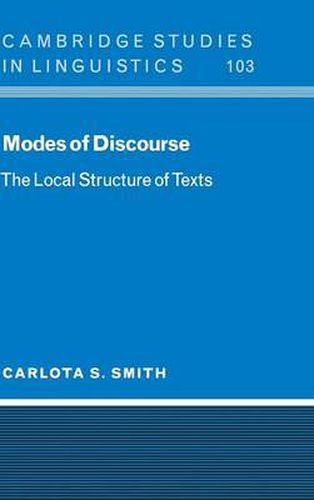Readings Newsletter
Become a Readings Member to make your shopping experience even easier.
Sign in or sign up for free!
You’re not far away from qualifying for FREE standard shipping within Australia
You’ve qualified for FREE standard shipping within Australia
The cart is loading…






In studying discourse, the problem for the linguist is to find a fruitful level of analysis. Carlota Smith offers a new approach with this study of discourse passages, units of several sentences or more. She introduces the key idea of the ‘Discourse Mode’, identifying five modes: Narrative, Description, Report, Information, Argument. These are realized at the level of the passage, and cut across genre lines. Smith shows that the modes, intuitively recognizable as distinct, have linguistic correlates that differentiate them. She analyzes the properties that distinguish each mode, focusing on grammatical rather than lexical information. The book also examines linguistically-based features that appear in passages of all five modes: topic and focus, variation in syntactic structure, and subjectivity, or point of view. Operating at the interface of syntax, semantics, and pragmatics, the book will appeal to researchers and graduate students in linguistics, stylistics and rhetoric.
$9.00 standard shipping within Australia
FREE standard shipping within Australia for orders over $100.00
Express & International shipping calculated at checkout
In studying discourse, the problem for the linguist is to find a fruitful level of analysis. Carlota Smith offers a new approach with this study of discourse passages, units of several sentences or more. She introduces the key idea of the ‘Discourse Mode’, identifying five modes: Narrative, Description, Report, Information, Argument. These are realized at the level of the passage, and cut across genre lines. Smith shows that the modes, intuitively recognizable as distinct, have linguistic correlates that differentiate them. She analyzes the properties that distinguish each mode, focusing on grammatical rather than lexical information. The book also examines linguistically-based features that appear in passages of all five modes: topic and focus, variation in syntactic structure, and subjectivity, or point of view. Operating at the interface of syntax, semantics, and pragmatics, the book will appeal to researchers and graduate students in linguistics, stylistics and rhetoric.